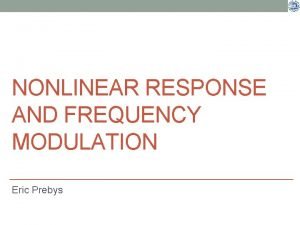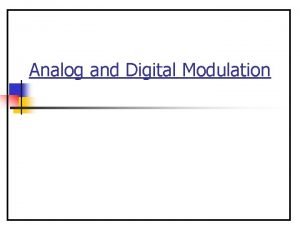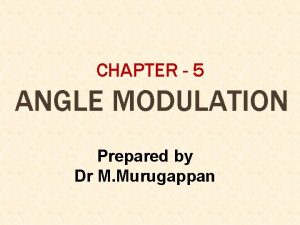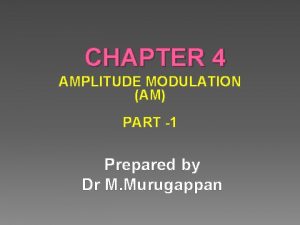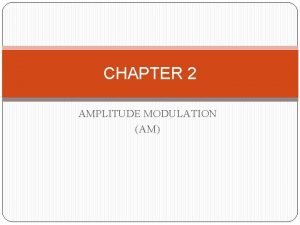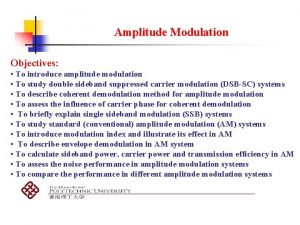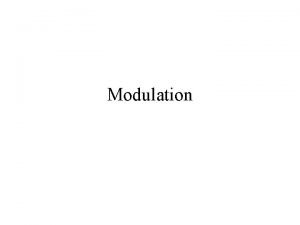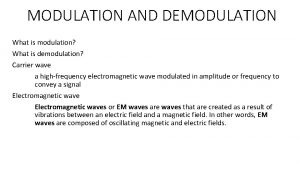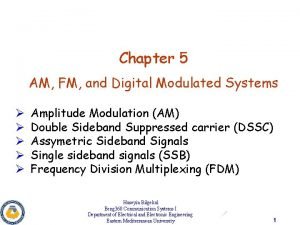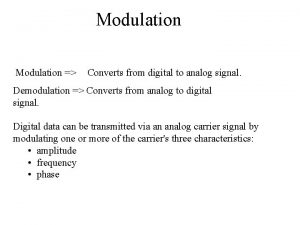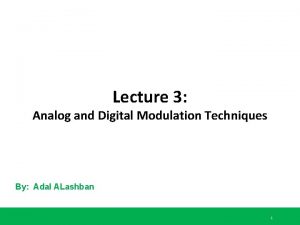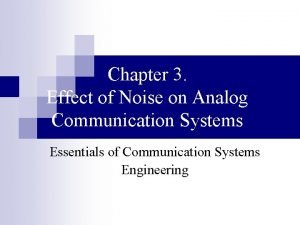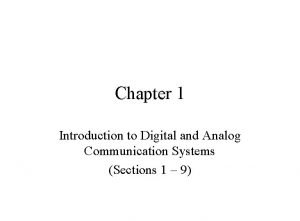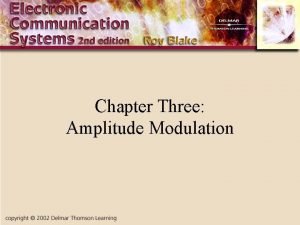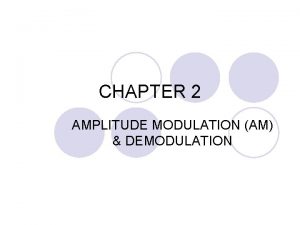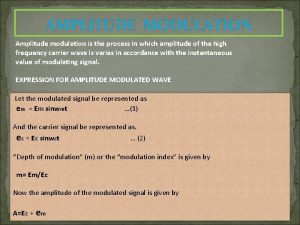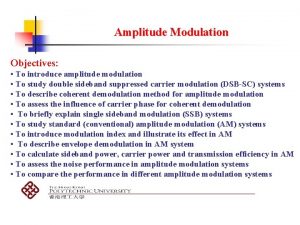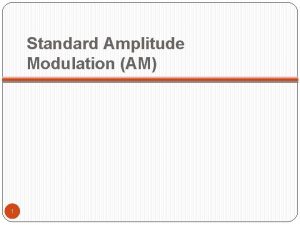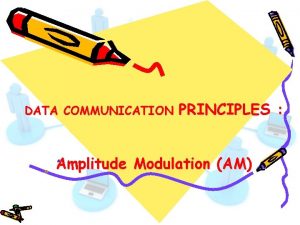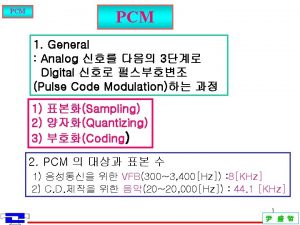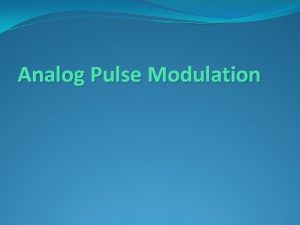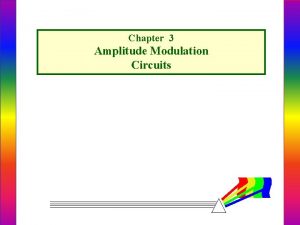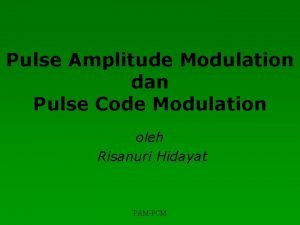Chapter 3 First generation systems Analog Modulation Amplitude















- Slides: 15

Chapter 3: First generation systems. Analog Modulation

Amplitude Modulation (AM)

Double sideband modulation (DSB) � Time � domain equation y. AM(t) = Information or message x carrier = m(t) x A cos(wct) Frequency domain equation

DSB power and bandwidth � Power in DSB signal ◦ DSB-C (with carrier) = Carrier Power + Carrier Power x Message power ◦ DSB-SC (suppressed carrier) = Carrier Power x Message power � Bandwidth of DSB signal = 2 wm

Single Sideband Modulation (SSB) � Balanced Modulator SSB generation y. SSB(t)=0. 5 m(t)cos(wct)± 0. 5 � SSB sin(wct) power and bandwidth ◦ SSB power = DSB power/2 ◦ SSB bandwidth = DSB bandwidth/2

Balanced modulator for SSB generation

AM Parameters � Modulation index m , -1 < m < 1, � Modulation efficiency h

AM Receiver

Angle Modulation

Types of Angle Modulation � Frequency � Modulation (FM) Phase Modulation (PM)

FM/PM power and bandwidth � Power � in FM/PM signal Bandwidth of FM/PM signal BFM/PM = 2 B (1+b) � Modulation index

� FM AM Comparison of AM and FM modulation systems is less susceptible to noise as compared to � FM has better sound quality than AM; however, this also requires higher bandwidth than AM. � Power AM � FM requirement is less in FM as compared to has shorter range of transmission, requiring Line of Sight (LOS) propagation.

Noise performance of AM and FM circuits interference is estimated by Signal to Noise ratio (SNR) � Channel � SNR in AM is constant SNRAM = SNRbaseband � SNR in FM can be improved by increasing the modulation index b SNRFM = 1. 5 b 2 SNRbaseband

Output SNR of AM/PM systems

Filtering techniques in AM/FM systems � Filters can minimize noise in AM/FM systems Filter can adapt to signal power (Sx) and channel noise power (Sn) densities � Weiner
 Amplitude modulation vs frequency modulation
Amplitude modulation vs frequency modulation Amplitude modulation vs frequency modulation
Amplitude modulation vs frequency modulation Advantages of angle modulation
Advantages of angle modulation Principles of amplitude modulation
Principles of amplitude modulation Principle of am
Principle of am Am modulation
Am modulation Am vs fm
Am vs fm Applications of amplitude modulation
Applications of amplitude modulation Pcm receiver
Pcm receiver Amplitude modulation
Amplitude modulation Modulation digital to analog
Modulation digital to analog Disadvantages of fsk
Disadvantages of fsk White noise in analog communication
White noise in analog communication First gen antipsychotics
First gen antipsychotics You are good and your mercy is forever
You are good and your mercy is forever Analog vs digital communication systems
Analog vs digital communication systems
